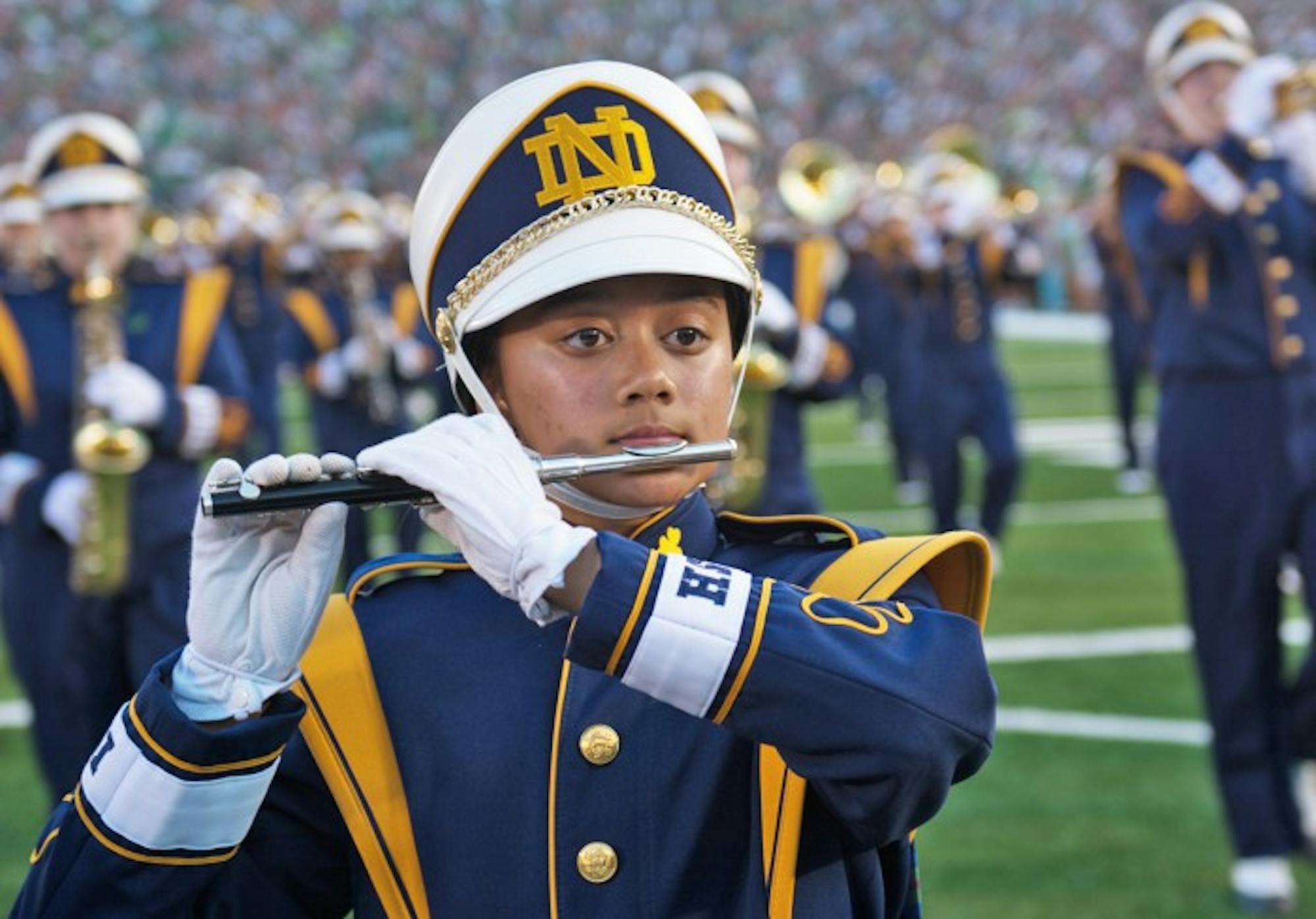When the Irish kick off their 2017 football season, the Band of the Fighting Irish will no longer be alongside them on the playing surface, the University announced Saturday morning. Instead, the Band of the Fighting Irish will become part of the student section, creating what Rob Kelly, associate athletic director of ticketing, premium and technology, calls “one student voice.”
“The rationale for moving the band into the student section was really two-fold,” Kelly said in an interview with The Observer on Tuesday. “The first and foremost is safety. So, ensuring that both student-athlete and band member safety in the event of an unlikely incident, which there has not been a specific one, but the specter of that is something we fear as administrators. We’re put in the care of student-athletes and members of the band, and given all the other changes we’re making, it seemed like an opportune time to make these changes.”

The band will now straddle the area at the very front of the freshman and sophomore sections at the wall between the end zone and the corner, Kelly said.
“The second reason for positioning the band within the student section is to sort of create one student voice, whether that be through the instruments of the band or the vocal chords of our lively student section,” Kelly said.
The change is consistent with the plans for the rest of the field, Kelly said.
“In the south end zone, we’re moving all of the field-level seating as well,” he said. “So there’s about 450 seats there that are also coming out, for the same reason.”
Paul Browne, vice president for public affairs and communication, said the move was not the result of any “catastrophic incident.”
“There have been guys running into [the band], and people have been knocked down and there have been no serious injuries, but it’s a concern that that could quickly turn very bad. So it’s not like there have been incidents, but so far so good, so let’s keep it that way.”
Kelly said safety has always been a top priority.
“We are tremendously thoughtful about what happens on game day because any time you bring 80,000-plus people together, the eyes of the world are upon you,” Kelly said. “This is something that we just really believe was the right thing to do and we needed to do it.”
While the stadium’s capacity will decrease, from 80,795 to a number around 78,000, the availability of student tickets will not change, Kelly said, because Notre Dame does not cap student tickets.
“If anything, we may see a slight increase in space [occupied by the student section],” Kelly said. “In my time here and to my knowledge, we’ve never capped the availability of student tickets. In fact, over time, because of the nature of student seating … we were able to sell single-game seats in parts of the student section in the end zone that weren’t being used. So what we’re going to do is push that back, so some of those student tickets won’t be sold and then that will allow for the band to come in as well as allowing for the student section to expand and spread out.”
Season tickets for students will decrease in price for the 2017 season, from $245 to $240, and while they will include seven games, tickets are priced for six games, according to a release from the University.
“It became very important to us early on that the student ticket price was the least expensive ticket in any given offering,” Kelly said.
Going forward, Browne said he hopes to utilize the stadium more.
“The architects were saying, ‘We want to keep Notre Dame as a campus as much as possible where people can walk one venue to another,’ and the stadium itself was maybe being used six, seven, eight times a year,” Browne said. “In terms of pedestrian traffic — except for those few occasions — it was actually an obstacle that you’d walk around to get somewhere else.”
The idea was to create about a dozen different, new locations on campus, Browne said, and they decided to consolidate it into one place.
“We wanted to think about changing the stadium from being an obstacle to being a place where people were going, where things were going on,” Browne said. “That extends to using the stadium itself for things other than football.”
That would include events such as concerts, Browne said.
“It’s going to be a whole effort to explore those opportunities,” Browne said. “It will be used for venues other than football.”









